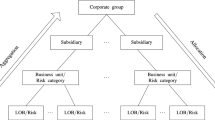Abstract
Assessing a company’s value is an important leverage for decision-making. Indeed, all decisions made within a company are generally aimed at maximizing the company’s value. In accounting, almost all models for assessing the value of a company are related to the amount of cash the company is able to generate. As a result, maximizing the value of a firm is usually about maximizing cash flow. However, beyond the usual accounting models, several recent initiatives have highlighted the key role of managing all assets, and not only the ones considered by the general accountability, in decision making and cash generation. Unfortunately, these methods are currently limited to conceptual and qualitative proposals that do not lead to a real decision support system thus far. This paper proposes a first step of formalization aiming at providing tools for these asset-oriented decision support approaches. The contribution is a Causal Loop Diagram to Support Decision-Making in order to maximize the value of companies. Based on a dedicated literature review, we design an asset-based causal loop model that formalizes the qualitative results of the literature review. We then develop an instantiation on an illustrative case via simulation in order to verify the relevance of the proposal and to show how such a model can be used in practice for decision making. This will support next research to develop an asset-based decision support system to maximize value of companies.
Access this chapter
Tax calculation will be finalised at checkout
Purchases are for personal use only
Similar content being viewed by others
References
Barney, J.B., Wright, P.M.: On becoming a strategic partner: the role of human resources in gaining competitive advantage. Hum. Resour. Manag. 37(1), 31–46 (1998). https://doi.org/10.1002/(SICI)1099-050X(199821)37:1%3c31::AID-HRM4%3e3.0.CO;2-W
Ben Taleb, R., et al.: Toward an innovative risk- and opportunity-oriented system for SMEs’ decision-makers. In: Actes du congrès CIGI QUALITA 2021, Grenoble, France, pp. 450–457 (2021)
Bollinger, A.S., Smith, R.D.: Managing organizational knowledge as a strategic asset. J. Knowl. Manag. 5(1), 8–18 (2001). https://doi.org/10.1108/13673270110384365
Botterweck, G., Pleuss, A.: Evolution of software product lines. In: Mens, T., Serebrenik, A., Cleve, A. (eds.) Evolving Software Systems, pp. 265–295. Springer, Heidelberg (2014). https://doi.org/10.1007/978-3-642-45398-4_9
Delgado-Ballester, E., Luis Munuera-Alemán, J.: Does brand trust matter to brand equity? J. Prod. Brand Manag. 14(3), 187–196 (2005). https://doi.org/10.1108/10610420510601058
Devinney, T.M., Stewart, D.W.: Rethinking the product portfolio: a generalized investment model. Manag. Sci. 34(9), 1080–1095 (1988). https://doi.org/10.1287/mnsc.34.9.1080
Dhirasasna, N., Sahin, O.: A multi-methodology approach to creating a causal loop diagram. Systems 7(3), 42 (2019). https://doi.org/10.3390/systems7030042
Erdem, T., et al.: The impact of brand credibility on consumer price sensitivity. Int. J. Res. Mark. 19(1), 1–19 (2002). https://doi.org/10.1016/S0167-8116(01)00048-9
Fink, L., et al.: Business intelligence and organizational learning: an empirical investigation of value creation processes. Inf. Manag. 54(1), 38–56 (2017). https://doi.org/10.1016/j.im.2016.03.009
Georgiopoulos, P., et al.: Optimal design decisions in product portfolio valuation. Presented at the ASME 2002 International Design Engineering Technical Conferences and Computers and Information in Engineering Conference, IDETC/CIE2002 (2002)
Hart, S.L., Dowell, G.: A natural-resource-based view of the firm: fifteen years after. J. Manag. 37(5), 1464–1479 (2011). https://doi.org/10.1177/0149206310390219
Hess, A.M., Rothaermel, F.T.: When are assets complementary? Star scientists, strategic alliances, and innovation in the pharmaceutical industry. Strateg. Manag. J. 32(8), 895–909 (2011). https://doi.org/10.1002/smj.916
Leitner, S., Wall, F.: Simulation-based research in management accounting and control: an illustrative overview. J. Manag. Control. 26(2–3), 105–129 (2015). https://doi.org/10.1007/s00187-015-0209-y
Nalchigar, S., Yu, E., Easterbrook, S.: Towards actionable business intelligence: can system dynamics help? In: Frank, U., Loucopoulos, P., Pastor, Ó., Petrounias, I. (eds.) PoEM 2014. LNBIP, vol. 197, pp. 246–260. Springer, Heidelberg (2014). https://doi.org/10.1007/978-3-662-45501-2_18
Orlikowski, W.J., Iacono, C.S.: Research commentary: desperately seeking the “IT” in IT research - a call to theorizing the IT artifact. Inf. Syst. Res. 12(2), 121–134 (2001). https://doi.org/10.1287/isre.12.2.121.9700
Philippart, M.: Les fournisseurs comme capital immatériel: une solution pour aligner la contribution des achats à l’innovation sur les objectifs des actionnaires. Presented at the Vers Les Achats 4.0: Quelles Compétences Développer Pour Être Plus Performant, Lausanne, Switzerland, 10 October (2018)
Rahimifard, A., Weston, R.H.: A resource-based modelling approach to support responsive manufacturing systems. Int. J. Adv. Manuf. Technol. 45(11), 1197 (2009). https://doi.org/10.1007/s00170-009-2025-8
Rai, A., Nandy, B.: Employer brand to leverage employees’ intention to stay through sequential mediation model: evidence from Indian power sector. Int. J. Energy Sect. Manag. 15(3), 551–565 (2021). https://doi.org/10.1108/IJESM-10-2019-0024
Rippel, M., et al.: Building blocks for volume-oriented changeability of assets in production plants. Presented at the Procedia CIRP (2016). https://doi.org/10.1016/j.procir.2015.12.009
Schumpeter, J.: Business Cycles. A Theoretical, Historical and Statistical Analysis of the Capitalist Process
Smith, M., Chang, C.: The impact of customer-related strategies on shareholder value: evidence from Taiwan. Asian Rev. Account. 17(3), 247–268 (2009). https://doi.org/10.1108/13217340910991947
Soenen, L.A.: The concept of cash flow: techniques for speeding up the flow of cash. Manag. Decis. 11(5), 314–322 (1973). https://doi.org/10.1108/eb001031
Stranieri, S., et al.: Adopting environmentally-friendly certifications: transaction cost and capabilities perspectives within the Italian wine supply chain. Supply Chain Manag. 27(7), 33–48 (2022). https://doi.org/10.1108/SCM-12-2020-0598
ASCM Supply Chain Dictionary | ASCM. https://www.ascm.org/learning-development/certifications-credentials/dictionary/. Accessed 04 Dec 2022
IFRS - Conceptual Framework for Financial Reporting. https://www.ifrs.org/issued-standards/list-of-standards/conceptual-framework.html/content/dam/ifrs/publications/html-standards/english/2021/issued/cf/. Accessed 03 Dec 2022
Author information
Authors and Affiliations
Corresponding author
Editor information
Editors and Affiliations
Rights and permissions
Copyright information
© 2023 The Author(s), under exclusive license to Springer Nature Switzerland AG
About this paper
Cite this paper
Ben Taleb, R., Lauras, M., Dahan, M., Montarnal, A., Miclo, R. (2023). An Asset-Based Causal Loop Model to Improve Corporate Value. In: Liu, S., Zaraté, P., Kamissoko, D., Linden, I., Papathanasiou, J. (eds) Decision Support Systems XIII. Decision Support Systems in An Uncertain World: The Contribution of Digital Twins . ICDSST 2023. Lecture Notes in Business Information Processing, vol 474. Springer, Cham. https://doi.org/10.1007/978-3-031-32534-2_3
Download citation
DOI: https://doi.org/10.1007/978-3-031-32534-2_3
Published:
Publisher Name: Springer, Cham
Print ISBN: 978-3-031-32533-5
Online ISBN: 978-3-031-32534-2
eBook Packages: Computer ScienceComputer Science (R0)




